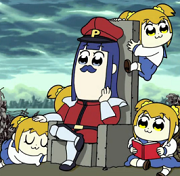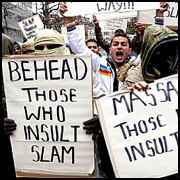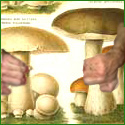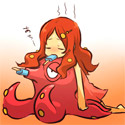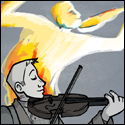|
On using Kelek in an encounter. In the book he is in, he is the leader of an evil adventuring party. He’s cautious enough to not instantly start poo poo with the heroes as when they encounter him and his whole party won’t be together. When encountered he will for sure be with his party’s fighter Warduke, and depending on events his cleric Zargash. Warduke is CR 5 like Kelek while Zargash is CR 3 and less likely to help out in the fight. The party is expected to be level 7 when the encounter happens. There is also Skylla the Warlock and Zarak the rogue but they almost certainly won’t be encountered with the others unless the DM wants that to happen. They are also the weakest ones being CR 2s.
|
|
|
|

|
| # ? May 31, 2024 21:17 |
Devorum posted:I'm all for refluffing. I've also had the misfortune of running into a lot of screeching, miserable rules lawyers that fly off the handle if I refluff a spell. Literally every Wotc DMG has a section where the DM and players are encouraged to swap out spell descriptions, so as long as the spell works the same I dunno why anyone would give a poo poo.
|
|
|
|
|
TheGreatEvilKing posted:Literally every Wotc DMG has a section where the DM and players are encouraged to swap out spell descriptions, so as long as the spell works the same I dunno why anyone would give a poo poo. in 3e it was a feat you were supposed to take instead, so letting someone do it without the feat was giving them a free pass on an opportunity cost. that was a reason to give a poo poo.
|
|
|
|
jmzero posted:Anyway, sorry to rant more/again; I just don't get how lots of these monsters/setups were ever supposed to work "right". 4E was relatively explicit about the various monster functions in combat designs, down to "solo" monsters which were quite possible to set up as solo encounters. 5E goes back to not explaining very much, I suspect because the designers still didn't understand how to construct interesting combat encounters in their new system. I'm sure everyone has their own ideas on this matter, but here are my 6 basic rules of 5E encounter design: 1. It's OK to have some fast, attrition encounters. Maybe it's someone like Kelek who the PCs might cleverly catch in his bedchamber alone, unprepared, allowing them to kill him and possibly before he even gets his first action; if the PCs aren't as clever, he ends up gathering with others to oppose them. Maybe it's bumping into three kobold guards and trying to silence them all before they can raise the alarm. Just don't rely overmuch on this sort of encounter. 2. For the big combats that you want to be meaningful and epic, you need numbers. 5E, despite the looks of those legendary monsters, does not support a "solo" encounter design. Legendary resistances mean you get one full round of monster actions before the spells that rob your monster of a turn can kick in, and you might even get two rounds, but it won't matter too much because four PCs focusing all their energy on one foe will almost certainly kill it in 2-3 rounds. Doubling the hp will extend the fight, but your big bad still doesn't do all that much and there's unlikely to be many tactics involved. Have some minions, or flunkies, or something else to draw fire or protect the big bad. Lair actions should either deploy minions, complicate the battlefield in a way that restricts the PC ability to engage their enemies and focus fire, or apply some debilitation. Low CR monsters in 5E remain relevant even at high levels, and most of them have enough hp once you're past CR 1 to require either time or a meaningful resource to kill rapidly. Mid-CR monsters can be tough threats: giants are especially good at this because they deal lots of damage and take a lot of damage, while having effective attacks at range and up close. 3. Generally, you want to mix one or two tough meatsacks or "leader" types with a larger number of weaker creatures. A Bugbear leader who engages the PC front line while five kobold slingers provide support at a distance, for example, provides a tactical situation where the front-liners either abandon their posts to engage the slingers, or dig in and hope they can soak up the hits. The other PCs are left between focusing fire on the much tougher bugbear to keep him from killing the front-line (as he deals a lot more damage per action) or trying to pick off the kobolds. As you get more sophisticated, you'll construct more interesting situations, and add in battlefield elements or distractions. An alternate approach is to have one or two Kelek types, essentially glass cannons with little health but lots of damage potential, and give them a front line of protectors who don't do much damage but can block fairly well. 4. Be warned that more enemies massively increases the danger of the encounter, though the CR system doesn't do a great job capturing that effect. As a basic rule of thumb, monsters that have either good chances to hit (high attack bonus, or a feature like Pack Tactics) or deal high damage can get exponentially more dangerous in numbers, where monsters that tend to miss or deal low damage are more forgiving. Once PCs get AoE attacks like Fireball, the "numbers" dynamic shifts and the battlefield circumstances start to matter a lot more: 16 orcs stuffed into a 20 X 20 room are a lot less dangerous when one Fireball kills half or more of them on the first round of combat. Things to be especially aware of in encounter design are monsters with their own area of effect attacks, disabling effects, or other force multipliers. Remember that you can mix and match stat blocks without mixing and matching descriptions, so you can have weaker orcs using the goblin base stats but replacing Nimble Escape with Aggressive. 5. For more advanced encounter design, don't deploy all the monsters at one time. You can either design an encounter with reinforcements, or have a "big bad" situation where the PCs burst into the room, see somebody in scary armor they may assume to be the big bad, and drop all their best attacks before the big bad shows up on round 3. Or maybe the PCs are attacking a Frost Giant leader, and you've decided the leader has a pet White Dragon. Start the combat without the dragon on the field. The PCs can't attack it, obviously. If the battle goes poorly--perhaps bad rolls, perhaps bad tactics, perhaps you made the encounter too dangerous--you can decide that the Dragon is asleep or away or otherwise doesn't make an appearance. If the PCs get lucky and kill half their enemies on the first round, you can have the dragon enter early. This also allows you to deploy wave attacks, where squads of enemies approach the PCs piecemeal. Those 16 orcs can't all get fireballed if you deploy them 4 at a time, and once your players have learned that they might have multiple smaller encounters layered on top of each other, the spellcasters will start saving those AoE spells for when they can catch more people (while spells with durations become more valuable). 6. Especially for a big or important combat, give PCs something else they either want or need to spend actions doing that doesn't involve pumping damage into your precious monsters. Fighting Orcus? You're in his throne room, and all around the outer edge of it are innocents tied to stakes. Orcus' cultists and undead start ritually sacrificing these people as the fight begins. Every sacrificed innocent gives Orcus healing or temporary hit points, so the PCs have multiple reasons to want to free them and help them escape. Those doing the sacrificing can be low CR; you can even mix in one or two credible threats with the weaker rabble if you like. The more rounds the PCs focus on saving these people or killing cultists, the more rounds Orcus has to fight them. There should probably be a rule 0, too: don't deploy any trick or technique too often. If the level 7 PCs run into Stone Giants who keep Cockatrices as pets, that's an interesting complication and a good use for a low CR (but dangerous) monster. If every encounter they have with Stone Giants involves pet Cockatrices, you've moved from an interesting challenge to a boring routine.
|
|
|
|
I was debating whether to post this in either this or the GM Advice thread, but I think I'd like some general advice on running 5e first. I'm in the process of writing up a one shot for Halloween that I'm envisioning as a citywide murder mystery / hunt for serial killer(s) and while I've GMed in the past (mostly 13th Age), this will be my first time running 5e so I was wondering if there are any pitfalls I should be aware of. I already know Zone of Truth and Speak with Dead are options and part of why I'm already debating whether I should run it at Level 4 or 5 (I already started thinking of options for SWD just in case). My big concern is building encounters for when they're needed. I want to avoid railroading as much as possible so I was wondering if I could put together like 10 encounters ahead of time that could be hypothetically placed anywhere when needed to let me avoid having to keep consulting the book for what's appropriate for the situation. If it turns out to be the best option all along, I understand; I just wanted to make sure. If anyone has any other tips or a link to a good encounter builder, I'm open to suggestions.
|
|
|
|
MelvinBison posted:I was debating whether to post this in either this or the GM Advice thread, but I think I'd like some general advice on running 5e first. If it's a 1-shot, why not just make up pregens for the players and skip all the stuff you don't want to use?
|
|
|
|
change my name posted:This is kind of funny, Wild Beyond the Witchlight has DLC: https://www.polygon.com/22698999/dungeons-dragons-domains-of-delight-spider-accessory-download-price I'm glad it's separate because it's the only part of the book I wanted, and now I don't have to buy a big-rear end adventure module for it.
|
|
|
|
Narsham posted:4E was relatively explicit about the various monster functions in combat designs, down to "solo" monsters which were quite possible to set up as solo encounters. 5E goes back to not explaining very much, I suspect because the designers still didn't understand how to construct interesting combat encounters in their new system. This is really good advice. I'd add a 7. If you really want to have a big epic boss fight against a single foe, dip into late 4E monster design's bag of tricks. Give it stages, give it a lot more actions in the form of reactions and secondary initiative counts, have those actions meaningfully change from stage to stage. You want the party to feel a sense of progress as they battle. And don't neglect those lair abilities. Use those to set up the most optimal situation for your boss monster.
|
|
|
Arivia posted:in 3e it was a feat you were supposed to take instead, so letting someone do it without the feat was giving them a free pass on an opportunity cost. that was a reason to give a poo poo. Nope! That feat was entirely worthless unless you were really hurting for +1 to caster level. 3.5 DMG, page 34 posted:Describing Spell Effects
|
|
|
|
|
PeterWeller posted:This is really good advice. I'd add a 7. If you really want to have a big epic boss fight against a single foe, dip into late 4E monster design's bag of tricks. Give it stages, give it a lot more actions in the form of reactions and secondary initiative counts, have those actions meaningfully change from stage to stage. You want the party to feel a sense of progress as they battle. And don't neglect those lair abilities. Use those to set up the most optimal situation for your boss monster. Lot of good ideas here (and in the first 6 too). I'll see if I can dig up some of this 4e content as it sounds very much like what my players want.
|
|
|
MelvinBison posted:I was debating whether to post this in either this or the GM Advice thread, but I think I'd like some general advice on running 5e first. So Zone of Truth and Speak with Dead are specifically worded so people can go all "from a certain point of view" on them. Hell, Speak with Dead doesn't even impose any truthfulness requirement on the corpse. People like to scream about how the guy who literally talks with God every day to perform miracles can get divine assistance, but there's a bunch of stuff you can do to throw that off, not least having the Zone of Truth victim start going to the authorities because someone broke out the mind magic. You could easily designate one or two of the 10 encounters as something that could be skipped by people running around with Detect Thoughts and that's part of your encounter attrition. If you wanted to be really mean you could have a few red herrings from one of the murder victims. Speak with dead also requires a mouth, so it's pretty easy for smart criminals to cut that part of the body off, and there are even historical records of people robbing pyramids cutting up the mummy to prevent the pharaoh's spirit from coming back to kick their asses. If you've got the 10 encounters, you could always turn them into a flowchart where 1 encounter provides clues to the other and so on. So if you check out the murder scene at the docks you find a bracelet that is engraved with the name of a jeweler, and you can go ask the jeweler about the victim to learn that the bracelet was a present from an affair, whereas Speak With Dead can cut out the jeweler entirely and go right to the other half of the affair. However, if you go to the mansion victim scene, you don't go to the jeweler and you find the secret account book full of gambling debts to the local thieves' guild, etc. It doesn't have to be one to one.
|
|
|
|
|
I did much prefer having monster roles and a more rigid to-hit in 4e, it made encounters far more predictable. The worst thing about 5E encounter design is that CR or Exp budget tells you almost nothing about the difficulty of the resulting encounter. You sadly have to fall back to eyeballing it quite a lot. For example, here is a scenario I set up a few days ago for a well-optimized 7th level party of 4. As a reminder, the recommended xp budgets for this party are Easy: 1400xp, Medium 3000xp, Hard 4400xp, Deadly 6800 xp. I'll note I had to mostly fall back on SRD resources as my usual site for third-party monsters that are better written was offline. 1: 6x cr2 Berserker = 2700, around "medium" 2: 4x cr2 Cult Fanatic, 2x cr5 reskinned Troll, = 5400, around "hard" 3: 2x cr3 Phase Spider, 2x cr8 Assassin = 9200, super "deadly" 4: 2x cr2 Cult Fanatic, 2x cr6 Mage, 3x cr6 custom monk enemy = 12400, super duper "deadly" ("deadly" for a party of 4 around level 10) 5: 6: The players chose to do 4 of these encounters without taking a short rest and TPK'd on the 4th encounter. If they had bothered to use some resources to heal instead of having one guy run in at 10 hp while everyone else was spread over 3 rooms they would have plowed through that one too. After an ally saved them from death and having given up some crucial intelligence to the enemy, I let them escape, long rest, and they came back to this: 1: 2x cr2 Cult Fanatic, 2x cr6 Mage, 2x cr6 frost giant, 1x custom CR9 spellcaster, 1x custom CR9 monk = 20100, "deadly" for a 13th level party of 4 They made mincemeat of this encounter without breaking a sweat. Encounter building rules are utter nonsense. That said these encounters would have wiped the floor with a less optimized or less D&D-experienced group. I just know what my players can do and challenge them appropriately. Generally I follow a lot of the guidelines Narsham outlines above. I look for CR+0 to CR+2 enemies to build around, then fill in with lesser support be that frontliners, ranged, or casters. I usually use third party or later-published monsters, the earlier ones are not well designed. I generally don't pay any heed to xp budgets, I just assess the top threats in terms of to-hit, the best two spells, off-action spells, and burst damage abilities. Depending on these I will choose how many of the top threats to use. Support assets don't need to be particularly deadly but they should fill their role well, frontliners basically just need sacks of hp, ranged need okay to-hit and damage on attacks and can fold to a stiff breeze, and caster support needs spells that are genuinely annoying but perhaps not good DC or encounter-changing. Then I set up the situation, preparation of any type makes an encounter way more deadly. Precasted buffs, places that block line of sight, terrain that makes closing difficult, choosing the relative positions at the start of combat, any unique mechanics to the area or situation, etc. If the party has the drop even if they don't have surprise that is a big factor in their favor. Generally hitpoints are more of a round counter than any added threat, most encounters are decided within the first 2 rounds and if I have an encounter that seems intense after 4-5 rounds I consider it a successful capstone on the adventuring day because it probably means the party is tapped out. But even with all that a well-built party needs *attrition* to challenge with monsters that are within their difficulty range. Splitting encounters into waves, forcing a choice to leave to a safer place to short rest, putting in time pressure, just having multiple rooms old-school dungeon style, these are all more important than what monsters you use. Any single battle can't carry a day on its own. So I often think in terms of how many resources the party will have at each stage in the entire day's adventure, rather than each encounter individually.
|
|
|
TheGreatEvilKing posted:Literally every Wotc DMG has a section where the DM and players are encouraged to swap out spell descriptions, so as long as the spell works the same I dunno why anyone would give a poo poo. Some people seem to think being a miserable little poo poo is a valuable personality trait, I guess? I move a lot, and therefore change groups a lot, and have run into That Dude way too often. But this gets at what I mean: I want it explicit, and in the Magic section of the PHB where players can easily see it...not a suggestion buried in the DMG.
|
|
|
|
|
5e fairly recently introduced Mythic Monsters the next step up from legendary. They are monsters that after you reduce them to 0 hp have a trait that fully or near fully heals them and then grants them new abilities and legendary actions to use. Apparently the Great Wyrms in the upcoming Fizbans will be Mythic, but honestly making Mythic monsters is pretty easy, and creating a mythic monster of any existing creature takes little time. Yusin fucked around with this message at 03:44 on Sep 29, 2021 |
|
|
|
Yusin posted:5e fairly recently introduced Mythic Monsters the next step up from legendary. They are monsters that after you reduce them to 0 hp have a trait that fully or near fully heals them and then grants them new abilities and legendary actions to use. Just put Bloodied back in for 5.5, it's not that hard Wizards... 
|
|
|
|
For an example I used Bael here as the final boss of a campaign. To buff him I made him a Mythic Creature giving him the trait he would recover all of his HP upon reaching 0 HP and would teleport and turn invisible on the spot. I gave him two new legendary actions he could use after this activated, namely the ability to use his 8th level Inflict Wounds for 1, and the ability to both teleport and turn invisible for 2 actions. The fight was probably the hardest of the campaign. My party was 18th level with a ton of magic gear and stuff, and the Paladin hard countered a lot of Bael's stuff, but I used his teleporting well and the cave environment they were fighting in to let him back off and regenerate when he was badly hurt, and during his first phase he had 8 Barbed Devils helping him out as distractions. In the end they exhausted all of his legendary Resistances, and stunned him, which finally let the Paladin and Fighter with a lucky crit kill him before he could teleport away and heal again. (They probably did enough damage to him to kill him four times over, had I not had him teleport away and hide for a bit if reduced to about 1/3 his hp.) Pinwiz11 posted:Just put Bloodied back in for 5.5, it's not that hard Wizards... I use Bloodied in my games, though less as of a mechanic, but more to show a monster is below half health.
|
|
|
|
Me: "The monster is looking rough." My players: "so they're Bloodied?" Me: "You didn't even play 4e why are you asking me this?!?!"
|
|
|
|
It's probably because Griffin used the term in the Adventure Zone: Balance, since he had a bit of experience with 4e before running a 5e campaign.
|
|
|
|
|
TheGreatEvilKing posted:So Zone of Truth and Speak with Dead are specifically worded so people can go all "from a certain point of view" on them. Hell, Speak with Dead doesn't even impose any truthfulness requirement on the corpse. People like to scream about how the guy who literally talks with God every day to perform miracles can get divine assistance, but there's a bunch of stuff you can do to throw that off, not least having the Zone of Truth victim start going to the authorities because someone broke out the mind magic. You could easily designate one or two of the 10 encounters as something that could be skipped by people running around with Detect Thoughts and that's part of your encounter attrition. If you wanted to be really mean you could have a few red herrings from one of the murder victims. My thought process about the encounters wasn't that I was going to force them through 10 of them, but that I figured it'd save time if I just had some already built in case something happens that they need or want to fight. I'm doing what I can to leave progress open-ended.
|
|
|
|
MelvinBison posted:I was debating whether to post this in either this or the GM Advice thread, but I think I'd like some general advice on running 5e first.
|
|
|
|
Quick question: From a mechanics standpoint, how viable would it be for a Path of the Beast Barbarian to take a 3 level dip into Rune Knight Fighter? I have a concept for a Lizardfolk character that uses the combination of Giant's Might and Bestial Form to basically turn themselves into a kaiju while raging, but I'm worried the numbers wouldn't be as impressive as the fluff...
|
|
|
|
Barb with a fighter dip and vice versa is fine. If you're worried about performance, don't dip either until you have your Extra Attack at level 5.
|
|
|
|
Real UK Grime posted:Barb with a fighter dip and vice versa is fine. If you're worried about performance, don't dip either until you have your Extra Attack at level 5. I think it's a bit sub optimal, but Barb with a 3 level dip in fighter for Champion (and the expanded crit range) is pretty hilarious. I just hit level 9 barb/3 fighter and rolled a bunch of 19s in row and it felt good. Progression wise, I went barb to 8, then fighter to 3, and then Barb for the rest of the campaign.
|
|
|
|
Toshimo posted:If it's a 1-shot, why not just make up pregens for the players and skip all the stuff you don't want to use? Splicer posted:If it's a oneshot and you're already iffy on the rules maybe run it in a murder mystery-ey system such as one of the Gumshoe games Meant to answer these sooner but it's a workday and iirc the Awful app doesn't do multi-quoting.
|
|
|
|
TheDemon posted:I did much prefer having monster roles and a more rigid to-hit in 4e, it made encounters far more predictable. The worst thing about 5E encounter design is that CR or Exp budget tells you almost nothing about the difficulty of the resulting encounter. You sadly have to fall back to eyeballing it quite a lot. 4E is a tough place to compare because it was as bad or worse than 5E at start. Essentials basically completely reworked all their core monsters and their design rules. The 4E group I played in was built around milestones and were known to complete an entire dungeon without taking a rest; I think our record was 14 milestones (that's 28 combat encounters, for those unfamiliar with 4E terminology). The central point TheDemon is making here is that encounter difficulty in 5E is tied to PC resources. A first encounter where the PCs have full resources simply isn't going to be as deadly because, if needed, they can throw their best stuff out immediately. Conversely, an encounter with a 5E group running on fumes doesn't have to be "deadly" to be deadly. But no system can account for that, although it ought to take into account the likelihood of PC resting and the implications of recovering powers. 4E tried its best, but as my own experience demonstrates, you don't need to expend limited resources if you can lock down opponents fast enough that they can't really hurt you. It's similarly impossible to account for those players who either underuse their PC abilities, or seem able to hit above their fighting weight. And no system can account for particularly good or bad synergies in monster abilities when setting up a "challenge rating" guideline. One excellent balancing factor is to either have inferior foes in well-defended positions, or superior enemies with specific tactical issues, whether it's a willingness to break their own defensive line to pursue a wounded foe or just built-in cowardice or laziness. One of my games saw us in a dungeon where the big bad had brought a bunch of Will o' Wisps. The wisps, in numbers, were dangerous enough they could almost certainly have killed us with hit and run tactics, and we ran into as many as 7 at a time (in a 4 PC group at 7th level). But we kept reliably killing 2-3, and they preferred to lead us into other dungeon dangers instead of trying for a stand-up fight themselves, so we were able to slowly whittle down their numbers over time instead of getting overwhelmed. They were thus a serious and persistent threat, one we'd spend big resources on in an attempt to score enough kills on them, but they didn't TPK us because the GM was running them "in character" instead of maximizing their effectiveness.
|
|
|
|
It really doesn't help the DMG and MM are completely at odds as to what monster stats should look like, nor that most 5e monsters are a dull matter of smashing DPS into HP until one side breaks first.
|
|
|
|
|
Finally got a pandemic, post-hurricane Saltmarsh game off the ground & I’m playing a warlock. Which invocations should I get first? Trying to play a blaster/controller Witch.
|
|
|
|
Kumo posted:Finally got a pandemic, post-hurricane Saltmarsh game off the ground & I’m playing a warlock. Agonising Blast is very strong if you're using Eldritch Blast as your main attack. There's usually at least one invocation you want for your Pact. Outside that, the better ones are either more EB modifiers (I like Repelling Blast), the at-will spells like Mask of Many Faces, Devil's Sight if you're going to aggressively use the Darkness spell, or situational ones for Saltmarsh like Gift of the Depths.
|
|
|
|
Narsham posted:The central point TheDemon is making here is that encounter difficulty in 5E is tied to PC resources. A first encounter where the PCs have full resources simply isn't going to be as deadly because, if needed, they can throw their best stuff out immediately. Conversely, an encounter with a 5E group running on fumes doesn't have to be "deadly" to be deadly. I do generally think that D&D would be better-off throwing out the attrition-based resource management in favour of encounters being - by standard - separate from each other. This would mean stuff like spells and other powers being per-encounter rather than per-day. The advantage is that DMs would know the power level of the party to a much more accurate degree, and you wouldn't need encounters that don't put the party at real risk but are just there to burn their resources to make a future encounter put them at real risk. You could still have rules that let you do the scene where the party have been worn down by a day's fighting but must try to fight regardless, just don't have that be the standard for every adventure. It should be just as easy to balance a day of combats as it is to balance a day where there is only a single combat.
|
|
|
|
Gort posted:I do generally think that D&D would be better-off throwing out the attrition-based resource management in favour of encounters being - by standard - separate from each other. This would mean stuff like spells and other powers being per-encounter rather than per-day. So you’d have at-will powers, encounter powers, and maybe a couple of daily powers for big boss fights? That’s such a great idea!
|
|
|
|
Pacing is such an odd issue in D&D, like people will be quick to tell you if combat seems too easy in it that your problem is that you are not running enough encounters per day and letting players rest too much but like... I think a big thing that goes unstated is how that's super restrictive from a narrative perspective? like, even very action/fight heavy narratives rarely hit D&D's threshold of 4+ encounters before an ability to recover meaningfully or a jump in time, and even the stories that have examples of this rarely stick to that as a norm. I feel like decoupling from the idea of 'daily' resources entirely would go quite a way towards helping stories and mechanics mesh a bit easier in D&D. Though , removing long-term resources entirely removes the space for long-term consequences, which is why I think D&D should ditch HP in favor of bespoke injuries/consequences but that would fundamentally alter the kind of game it is and I respect that some folks aren't looking for that here.
|
|
|
|
Ash Rose posted:
A basic house rule I've found that moves towards a middle ground on the HP/Injury spectrum is having a character come back from dying with a level of exhaustion. Exhaustion itself is a pretty powerful, if underused, mechanic and having a character gain a temporary, though difficult to remove penalty after being downed gives combat a bit more narrative weight and circumvents the problem of in-combat healing always being better done to bring someone back from the brink. Expanding on an idea like that might be a good direction for future editions to go in.
|
|
|
|
KingKalamari posted:A basic house rule I've found that moves towards a middle ground on the HP/Injury spectrum is having a character come back from dying with a level of exhaustion. Exhaustion itself is a pretty powerful, if underused, mechanic and having a character gain a temporary, though difficult to remove penalty after being downed gives combat a bit more narrative weight and circumvents the problem of in-combat healing always being better done to bring someone back from the brink. Expanding on an idea like that might be a good direction for future editions to go in. Oh, this is good.
|
|
|
|
Real UK Grime posted:Agonising Blast is very strong if you're using Eldritch Blast as your main attack. There's usually at least one invocation you want for your Pact. Yes, that was in line with my thinking but I was worried about game balance if I go full Agonizing + Repelling & Darkness + Devil’s Sight. Also two of the other players are aquatic races, so taking Gift of the Depths too early crowds out their party roles. I guess a larger question is how to optimize but not be so over-powered it becomes annoying for the DM & other Players.
|
|
|
|
nelson posted:So you’d have at-will powers, encounter powers, and maybe a couple of daily powers for big boss fights? That’s such a great idea! I'd ditch the dailies or you've just got attrition there again.
|
|
|
|
Gort posted:I do generally think that D&D would be better-off throwing out the attrition-based resource management in favour of encounters being - by standard - separate from each other. This would mean stuff like spells and other powers being per-encounter rather than per-day. The advantage is that DMs would know the power level of the party to a much more accurate degree, and you wouldn't need encounters that don't put the party at real risk but are just there to burn their resources to make a future encounter put them at real risk. If you take away attrition, the default consequences are reduced to "absolute victory" and "absolute loss" with no nuance in between. The DM can still create side objectives, of course, which creates a wider range of outcomes (e.g. whether the party manages to stop the goblin cart before it runs off with the treasure on top of dealing with the goblin guards), but that introduces yet more work for the DM and still doesn't reproduce the full range of outcomes created by attrition mechanics (though nonbinary side objectives are obviously still possible—completing a battle against a red dragon in as few turns as possible so as to minimize the number of houses it burns down, for instance). Other, lesser problems: in-fiction issues (fatigue is an assumption of practically all fiction, so it feels strange for characters to just keep going at full power until they choose to stop), loss of one dimension of ability design (freely usable vs. spectrum of limited-use, one-use, and conditionally reusable). None of this is to say that an attrition-free game is impossible; it would just require individually compelling combats that many DMs probably are not prepared to craft, along with an excellent system for adjudicating them. Balance would be easier, but engagement would be hard—the DM's job might be harder than ever. Furthermore, a fully attrition-less game would be a more radical reworking of the underlying system than even D&D 4e, which means that many people who play D&D for its existing mechanics would ignore the new system.
|
|
|
|
On the other hand "absolute victory" and "absolute loss" isn't actually a real dichotomy, because the game is set up where the in PCs need to win every time for the fiction to move forward, and if they lose, it needs to be because they chose to in the fiction. In fact, if players are able to cleverly build characters and strategize to punch above their weight class, win when they should lose, or not suffer enough attrition, people consider it a bug in the system and say it's badly balanced. So if the actual game of doing combat is fun and compelling, you don't need attrition to be a prime factor in the gameplay loop, it can just be a storyline beat when attrition actually comes into play. edit: and design doesn't have to be so strict on free use vs. limited use. Monsters have abilities that recharge over several rounds, PCs could have a Fireball that can only be cast after you properly charge it up in combat, or something similar too Infinite Karma fucked around with this message at 17:11 on Sep 30, 2021 |
|
|
|
Gort posted:I do generally think that D&D would be better-off throwing out the attrition-based resource management in favour of encounters being - by standard - separate from each other. This would mean stuff like spells and other powers being per-encounter rather than per-day. The advantage is that DMs would know the power level of the party to a much more accurate degree, and you wouldn't need encounters that don't put the party at real risk but are just there to burn their resources to make a future encounter put them at real risk. I think you're looking for something like the Strike tactical combat rules. I've played it a bunch and it's made by our forum's own Jimbozig! Less nitty gritty than DnD but still has some tactical depth. Here's the SA thread Edit: Strike also measures success and failure based on a metric called Strikes, like when you roll a 1, or get knocked down, etc. The more of those, the more even if you kill the enemy you may not achieve your full goal. HP, encounter powers, and strikes all reset after a fight, no attrition. Jade Mage fucked around with this message at 17:27 on Sep 30, 2021 |
|
|
|
HP are still a limited resource. Of course getting fresh healing spells every encounter might defeat that. I suppose if they consumed hit dice it would be okay.
|
|
|
|

|
| # ? May 31, 2024 21:17 |
|
Infinite Karma posted:On the other hand "absolute victory" and "absolute loss" isn't actually a real dichotomy, because the game is set up where the in PCs need to win every time for the fiction to move forward, and if they lose, it needs to be because they chose to in the fiction. In fact, if players are able to cleverly build characters and strategize to punch above their weight class, win when they should lose, or not suffer enough attrition, people consider it a bug in the system and say it's badly balanced. nelson posted:HP are still a limited resource. Of course getting fresh healing spells every encounter might defeat that. I suppose if they consumed hit dice it would be okay. Elephant Parade fucked around with this message at 17:20 on Sep 30, 2021 |
|
|







